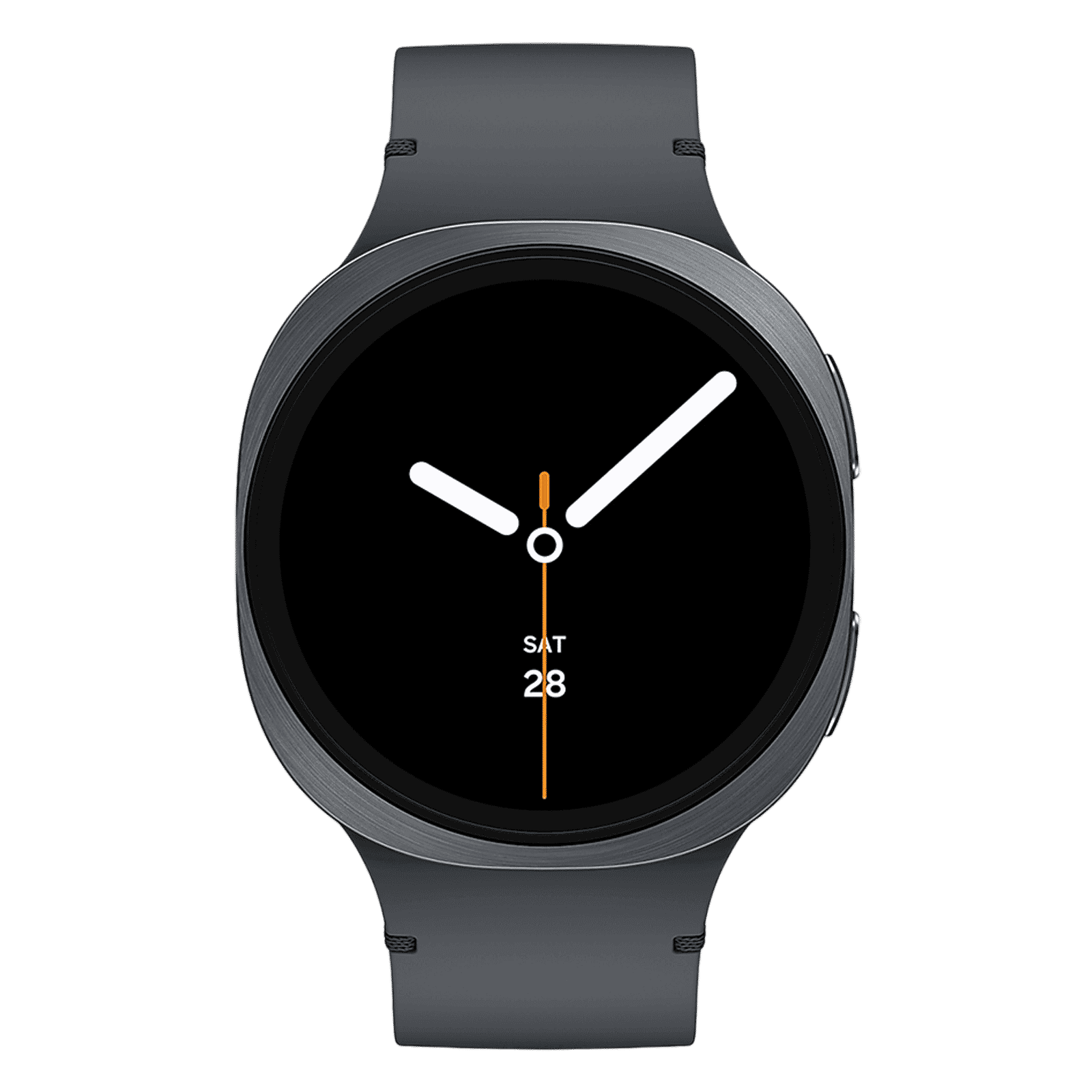
Consumer Electronics
•04 min read

Buy SAMSUNG Galaxy Watch8 Wi-Fi+BT+GPS Wear OS Smartwatch (44mm Super AMOLED Display, 3nm Processor, Fall Detection, Sport Strap) online at best prices from Croma. Check product details, reviews & more. Shop now!
Imagine a world where all your devices work seamlessly together. In today’s consumer electronics landscape, interconnected devices not only boost productivity but also enrich your digital lifestyle. At Tata Neu and Croma, you can explore a wide range of gadgets, home appliances, and more, with benefits like express delivery for orders placed before 6pm (check availability) and the chance to earn up to 5% NeuCoins on every purchase. Exploring how different ecosystems enable such integration can help you make an informed decision based on your unique needs.
Ecosystems in the tech industry are all about interconnected devices that communicate with one another. When smartphones, tablets, wearables, and smart home devices are part of a well-designed network, everyday tasks—from transferring files to managing home appliances—become significantly easier. In modern digital lifestyles, the choice of an ecosystem can be just as important as the individual devices you use.
Widely recognised for their strengths, two ecosystems offer distinct advantages by incorporating a wide range of devices. One offers a tightly controlled environment known for simplicity and robust security, while the other champions flexibility with broad device compatibility and customisation options.
Some users value the seamless device-to-device connectivity provided by proprietary features like file sharing, message synchronisation, and continuity options. This Samsung vs Apple comparison highlights differences in smart device integration and customisation options. One ecosystem delivers an uninterrupted experience when moving from one device to another, keeping work and leisure in perfect sync. Its suite of exclusive services ensures that your content is accessible and secure.
Other users appreciate an ecosystem that embraces openness. With strong integration across devices, this setup offers versatile sharing capabilities, enhanced smart home control, and additional multitasking features. Its broad compatibility serves those who require a more flexible approach to technology, complimenting various operating systems and device preferences.

Buy SAMSUNG Galaxy Tab S10 FE Wi-Fi+5G Android Tablet (10.9 Inch, 8GB RAM, 128GB ROM, Gray) online at best prices from Croma. Check product details, reviews & more. Shop now!
A major aspect of an ecosystem’s effectiveness is how its devices communicate with each other. Some ecosystems excel by allowing effortless transitions between devices, whether it’s transferring files or continuing tasks across platforms. The design is intuitive, featuring an uncomplicated, user-friendly interface with features that support connectivity in a way that is both fast and secure. For instance, a feature that lets you share content nearby or continue editing on another device can make a significant difference in your day-to-day operations.
In contrast, other ecosystems focus on a more adaptable approach. They provide strong pairing options and cross-platform integration that enable you to mix and match devices from different categories—be it your smartphone, tablet or smart appliance—to build a flexible work and leisure environment. This degree of versatility is particularly valuable for multitaskers and digital enthusiasts who frequently switch between various forms of media and applications.
When it comes to smart homes, device compatibility and ease of integration take centre stage. One ecosystem integrates smart home devices with a controlled interface that is easy to set up; you can manage your home's lighting, temperature, and security with just a few taps. The streamlined approach means every device is designed to work in complete harmony, although it is available in a more limited range of devices.
Conversely, another approach focuses on extensive compatibility across different platforms. This ecosystem is designed to work with diverse smart home devices, letting you customise your connected environment. With dedicated features for smart home control, users can enjoy an integrated experience that combines technology, customisation, and ease of use seamlessly. For instance, the ability to manage complex home automation scenarios can transform routine living into a highly interactive experience.
Insight Corner: Ecosystem vs Individual Devices
Did you know? While individual devices like smartphones and tablets matter, the real power lies in how well they integrate into an ecosystem. Flexibility appeals to multitaskers looking for varied connectivity options, while a tightly integrated system delivers unmatched simplicity and reliability.
Personalisation and customisation are often key deciding factors. In one ecosystem, you can tailor your device experience by choosing themes, widgets, and other custom options. This freedom lets users create an environment that is distinctly their own, supporting both productivity and personal style. The system’s adaptable design makes it easier for users to update their setup as their needs evolve.
The alternative ecosystem values standardisation. Its consistent design across devices ensures that every application and service works uniformly and reliably, reducing potential frustrations that come with frequent adjustments. For users who favour a reliable and polished experience, this consistency is a major advantage, leading to high levels of user satisfaction over time.
Looking at the long-term investment, it is important to consider factors such as device lifecycle, software updates, and upgrade paths. In one ecosystem, regular software updates keep devices secure and efficient, assuring longevity and solid performance. Meanwhile, the adaptive ecosystem offers flexibility when it comes to integrating new tech and upgrading parts of your digital setup without a complete overhaul.
Sustainability plays an essential role in today’s consumer electronics. One ecosystem has made strides by focusing on eco-friendly materials and setting ambitious, carbon-neutral goals. The approach to sustainability extends beyond just products; it also covers efficient manufacturing processes and responsible recycling practices aimed at reducing environmental impact.
The other ecosystem has also embraced environmental initiatives, focusing on eco-friendly manufacturing and robust recycling strategies. While both systems are actively working towards greener practices, there are unique aspects to each brand’s strategy that reflect their individual commitments to sustainability. By comparing these approaches, users can align their tech choices with their ethical values, contributing to a cleaner and more responsible technology landscape.
Digital ecosystems are central to enhancing how we interact with technology. Choosing between a system that provides streamlined integration versus one that offers flexibility is a matter of personal preference and lifestyle. The benefits of seamless device integration, environmental considerations, and Tata Neu’s rewards system, including earning NeuCoins with every purchase, highlight a customer-focused approach that adds value to your digital lifestyle. By understanding how these ecosystems work and considering a range of factors, you can confidently select the system that best suits your needs and enriches your everyday experiences.